Tuesday, May 21, 2013
Chile launches ambitious tourism campaign at World Travel Market in Sao Paulo — MercoPress
Chile launches ambitious tourism campaign at World Travel Market in Sao Paulo — MercoPress
WTM is one of the largest tourist events in the world and is held annually in the city of London. This is the first version of the trade show in Latin America.
Geographical, climatic and cultural contrasts play a fundamental role in this campaign, which promotes the diversity of activities in which to take part in Chile, such as trekking in the Parque Nacional Torres del Paine national park, one of the best nature destinations in the world, rafting down rivers surrounded by ancient forests and towering volcanoes, skiing the best slopes in the continent with the Andes as a backdrop, or experiencing the ancient culture of Rapa Nui on the remote Easter Island.
The images within the new promotional materials seek for a way of communication that is more focused on the traveller’s experience of the landscape and use, in addition, messages with humour and irony in order to engage a more diverse audience, conveying the essence of the local culture.
Furthermore, it is based on the framework of the plan to promote Chile abroad, which has six experiences: Natural Inspiration, Adventure and Sport, Culture and Heritage, Flavors and Wine, Health and Wellbeing, and Urban Life.
Under Secretary for Tourism, Jacqueline Plass, said that “this new campaign we are launching today to promote Chile abroad aims to directly captivate foreigners that are resident in strategic markets, and is focused towards the emotional aspects while also exhibiting the different experiences and landscapes on offer to visitors in Chile.”
“With this new campaign we gain much greater appeal, allowing us to differentiate ourselves from other countries,” said Andrea Wolleter, General Manager of Turismo Chile.
The new image will start to be exhibited in all the markets that have been established as priorities: Argentina, Brazil, Peru, Colombia, Germany, France, Spain, England, the USA, Mexico and Australia. It will be used for promotion in print media, online social networks and in public spaces.
Last year was excellent for tourism in Chile, international tourist arrivals grew by 13% over the previous year, reaching 3,468,475 tourists, making the country the fastest growing in the region according to figures from the World Tourism Organization (WTO).
The Chilean government and private institutions involved in the promotion of tourism have set a target of 4 million passengers by 2014, increasing the industry’s contribution to the Gross Domestic Product to 6%.
Chile confirms its commitment to the cruise industry at the Convention in Valaparaiso — MercoPress
Chile confirms its commitment to the cruise industry at the Convention in Valaparaiso — MercoPress
The two-day Seatrade Latin America event concluded on May 15 after drawing tourism, transport and port officials from across the region, more than 200 delegates from 15 countries and nearly 100 travel agents for specialized cruise sales training.
“After the first two Seatrade Latin America events focused on Brazil and Argentina, it's really exciting to have the opportunity to look at the prospects for Pacific Coast cruise tourism and Chile's role in that,” said Chris Hayman, chairman of Seatrade, organisers of Seatrade Latin America.
“We had tremendous support from the government of Chile and other interests. It's obvious that Chile really wants to engage in cruise tourism and has made the commitment to prepare for its growth.”
Conference sessions addressed wide-ranging issues and opportunities including coastal trade, new itineraries, operating costs, infrastructure, product development, excursions, service and quality, the emerging expedition cruise sector and Latin America as a source market for cruising.
“Cruising is important for the economic development of our country,” Minister de Vicente told the Seatrade Latin America keynote session, adding that Chile is a good place to visit and to do business, with strong GDP growth, transparency, security, low corruption, competitiveness, innovation and abundant natural attractions.
Chile's Transport Undersecretary Gloria Hutt said her country is working to ensure it has adequate infrastructure to grow tourism, including good port facilities to support the cruise business, more capacity, better services and connectivity and greater efficiency.
Chile's tourism growth is outpacing the region, according to Sernatur Director Daniel Pardo, who outlined a concrete, long-term national strategy to foster that growth including a sustainability program and new destinations and products that benefit the cruise sector. Pardo added that Chile wants to foster a year-round cruise business and is committed to developing new North Pacific and South Pacific routes.
Senior cruise officials from Carnival Corp. & plc, Royal Caribbean Cruises Ltd., MSC Cruises, Costa Cruises, Crystal Cruises, Silversea Cruises, Hurtigruten, Un-Cruise Adventures, Ecoventura, Lindblad Expeditions and Cruceros Australis, among others, participated in Seatrade Latin America as speakers and delegates.
“This continent is, was and will remain very important for us,” said Giora Israel, senior vice president, Global Ports & Destinations Development Group, Carnival Corp. & plc, representing 10 global cruise brands.
On behalf of Seatrade, acclaimed sales training expert Scott Koepf, vice president of sales for Avoya Travel, one of North America's largest cruise retailers, led Cruise Day Training educational sessions for regional travel agents.
Apart from conference sessions and an exhibition, Seatrade Latin America featured ample networking opportunities and a lively social program, including varied music and dance performances highlighting different regions of Chile. Traditional culinary specialties and the country's famous wines were served throughout. A Gala Dinner on May 14 took all delegates to the Valparaiso Sporting Club in Viña del Mar where an exciting horse race kicked off the evening followed by dining, live music and wine tasting.
“We are full of pride to host the cruise industry in Chile,” said Sebastian Montero Lira, president of the Southern Cone Ports Corp. (Conosur).
Expedia touts increased travel demand for Dominican Republic - DominicanToday.com
Expedia touts increased travel demand for Dominican Republic - DominicanToday.com
BELLEVUE, Wash.– The Expedia group, the world's largest online travel company, reported today that travel demand for the Dominican Republic increased by 24% during 2012, in comparison to the previous year. As a key destination in Expedia’s Caribbean portfolio, the executive team is visiting Punta Cana this week to strengthen relationships with hotel partners and participate in the Dominican Annual Tourism Exchange taking place from April 23rd through 25th.
Topics of discussion with hotel partners will include the development of tailor-made distribution strategies, campaigns aimed to increase visibility of their properties and boost sales – considering the valuable global exposure provided by Expedia in nearly 70 countries – and how to take advantage of market opportunities such as mobile technologies.
“The Dominican Republic is a very popular product on all Expedia websites, as shown by more than 380,000 room nights sold on Expedia websites last year,” said Marco Tagliatti, vice president of Lodging Supply for the Expedia group in Latin America and the Caribbean. “We see a big opportunity for hotel partners in participating on Expedia vacation packages, which currently represent over 70% of total sales to Dominican Republic, as package travelers tend to book their hotel stay further in advance, and they typically stay longer.”
While the United States remains the leading feeder market for the Dominican Republic, hotels in the destination have been successful in attracting a slew of international travelers from other feeder markets last year, such as Canada, United Kingdom, France, Brazil and Germany. Expedia data showed exceptional growth in travel demand in some of Dominican Republic’s emerging origination markets, such as Italy, Sweden, Netherlands and Norway.
To honor the company’s valued and loyal lodging partners in the Dominican Republic, the Expedia team hosted an appreciation event on April 22nd, recognizing outstanding performance in various categories. Below is a list of notable honorees which were selected based on revenue success in 2012:
· Top Producer in Punta Cana: Majestic Elegance Punta Cana - Luxury All Inclusive
· Top Producer in the rest of Dominican Republic: Renaissance Santo Domingo Jaragua Hotel & Casino
· Top Package Producer in 2012: Hotel Melia Tropical - All Inclusive
· Top Producer in international points of sale in 2012: Hard Rock Hotel & Casino Punta Cana All Inclusive
· Fastest-growing property in Dominican Republic in 2012: Hotel Bavaro Princess All Suites Resort Spa & Casino All Inclusive
· Best 2012 Partner: Majestic Colonial Punta Cana All Inclusive, due to its dynamic, proactive strategy and high performance.
At DATE 2013, Expedia will also be discussing the recently introduced Expedia® Traveler Preference™ (ETP) program with hotel partners. ETP is designed to better serve travelers by offering them the choice to pay either at the time of booking (called Expedia Collect) or upon check out at the hotel directly (called Hotel Collect). For participating hotel partners, early testing showed that participating hotels were seeing an increase in bookings and seeing booking with longer lengths of stay compared to non-participating hotels.
The Expedia group features more than 140 websites in nearly 70 countries worldwide, from brands such as Expedia®, Hotels.com®, Hotwire®, Egencia®, Expedia Affiliate Network® and Venere®. Expedia also generates bookings from mobile sites and apps as well as offline booking channels.
Stone Horse Expeditions & Travel Announces New Season of Horseback Riding in Mongolia
Stone Horse Expeditions & Travel Announces New Season of Horseback Riding in Mongolia

 “We did the Gorkhi-Terelj National park expedition in September 2012, with Stone Horse. It was an incredible experience”. Marieke Dechesne, Boulder.
“We did the Gorkhi-Terelj National park expedition in September 2012, with Stone Horse. It was an incredible experience”. Marieke Dechesne, Boulder.
Stone Horse Expeditions & Travel Announces New Season of Horseback Riding in Mongolia
Imagine exploring the unique culture and amazing landscape of this mystical country, the home of Genghis Khan and the eternal blue sky. Travel in Mongolia by horseback and experience the land the way the Mongols do.
Co-founder of Stone Horse, Sabine Schmidt and her horse "Goodboy", working the 10 Day Gorkhi-Terelj National Park Horseback riding expedition in Mongolia
Ulaanbaatar, Mongolia (PRWEB) April 25, 2013
Stone Horse Expeditions & Travel announces its new season of 10 and 14 Day horseback riding expeditions exploring new routes and sites through the cultural and wilderness landscapes of Mongolia. Running from mid-June through mid-October, with these trips one can venture by horseback into this unique and colorful land where horse riding and traditional nomadic herding is still a way of life.
These small group horseback riding expeditions are suitable for fit and adventurous novices and experienced horse riders alike, guiding people through the pristine national parks of the Gorkhi-Tereljand the Khentii Mountains of Mongolia on an adventure of a lifetime. Crossing mountain passes, fording rivers and riding through colorful historical landscapes, guests will meet nomadic herders and see evidence of ancient horse culture everywhere.
“We did the Gorkhi-Terelj National park expedition in September 2012, with Stone Horse. It was an incredible experience,” says Marieke Dechesne, who made the trip to Mongolia with several friends just to do this ride. Keeping the group size small attracts people like Marieke who want a safe quality experience and environmentally friendly travel.
“Mongolia is a safe holiday destination and visitors are always amazed at the openness and the friendly hospitality of the Mongolian people,” says Keith Swenson, an American who has lived and worked in the country for the past 14 years and is founder of Stone Horse Expeditions & Travel. Keith has worked in remote places throughout the world in areas as diverse as Antarctica and the Sultanate of Oman, managing a large wildlife sanctuary. Drawn to open spaces and the natural world brought him to Mongolia, where he helped develop the protected area system and worked for the improvement of rural livelihoods in the country’s mountainous Western regions.
Sabine Schmidt, his wife and co-founder of Stone Horse and takes care of expedition logistics to ensure these extraordinary horse riding adventures are as comfortable as possible for guests. Working in Mongolia since 1998 with conservation and development has brought her close to rural people and the issues they face in managing the natural resources they depend on as pastoralists.
“These horseback expeditions in Mongolia are a way to share knowledge of the country and its natural environment. Working for natural resource protection has helped to understand the beauty and secrets of the landscape and about people’s relationship to their land,” says Schmidt.
The Lonely Planet guide to Mongolia agrees and list Stone Horse Expeditions & Travel as a “professional outfit with quality horses and eco-conscious policies.” Stone Horse takes great care to ensure their horses and the equipment they use are the best possible, even going so far as to design and build their own custom saddles for the comfort of both horse and rider.
The land of the eternal blue sky and open steppe is changing fast though. Large scale mining operations with both its positive and negative effects are bringing enormous challenges to Mongolian that need to be addressed if the country is to move forward without damaging its environment and social fabric. Nomadic herding communities are still living a life steeped in age old practices yet adapting quickly to modern technologies, shaping life on the steppes today. The nomadic lifestyle and culture everywhere is fast disappearing and Mongolia is no different, so now is a good time to see and experience this country and this unique way of life.
Keith and Sabine are well known for their knowledge of the country’s national parks, rural life and of the challenges nomadic herder’s face. Conde’Nast Traveler magazine acknowledged this when looking into the issues that Mongolia’s young democracy must work with when preserving its culture and meeting the demands from international markets for natural resources. The country certainly is "on the move".
Travelers who want to experience the real Mongolia with its nomadic culture and spectacular landscapes can contact Stone Horse Expeditions & Travel athttp://www.stonehorsemongolia.com, or info(at)stonehorsemongolia(dot)com. Or phone: +976 11 343 074 and +976 9592 1167.
Back to buddhism's basics in sri lanka | Bangkok Post: lifestyle
Back to buddhism's basics in sri lanka | Bangkok Post: lifestyle
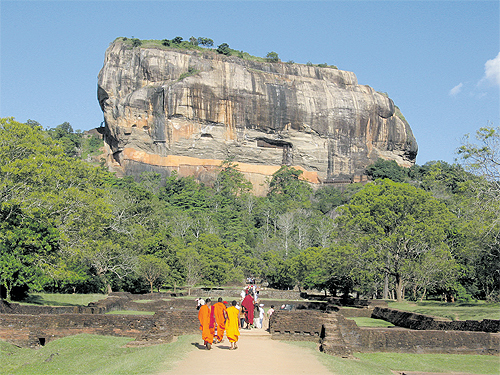

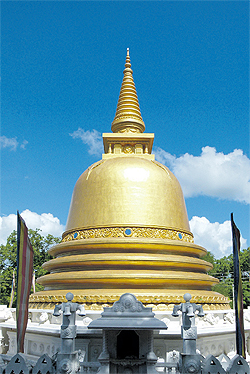
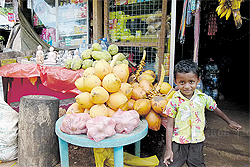
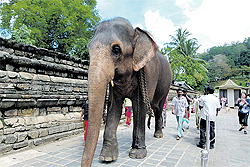

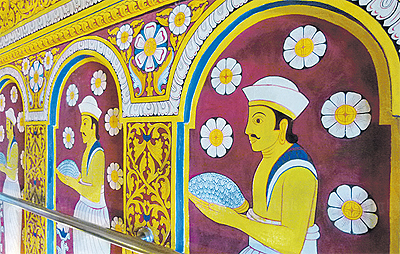

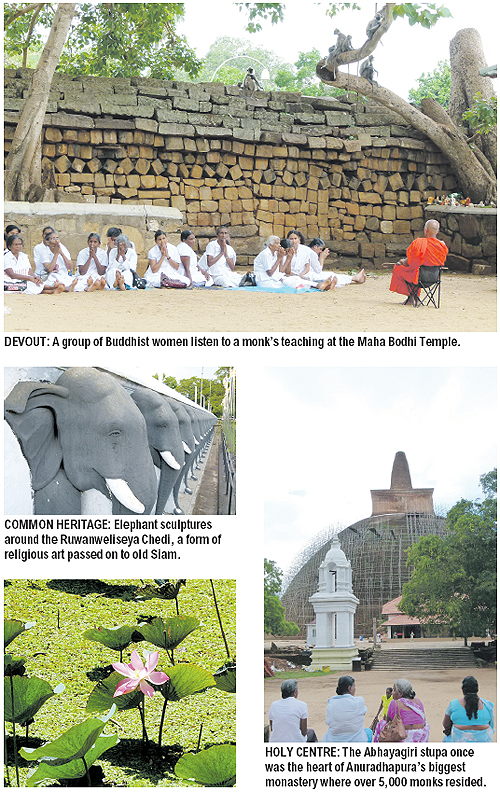

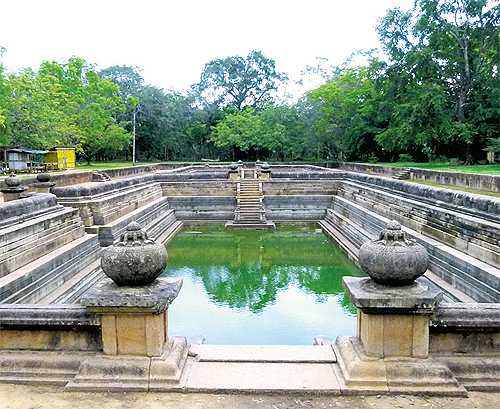
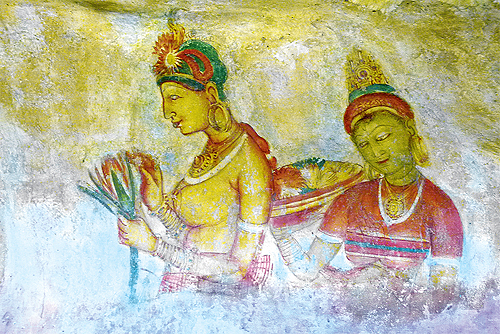
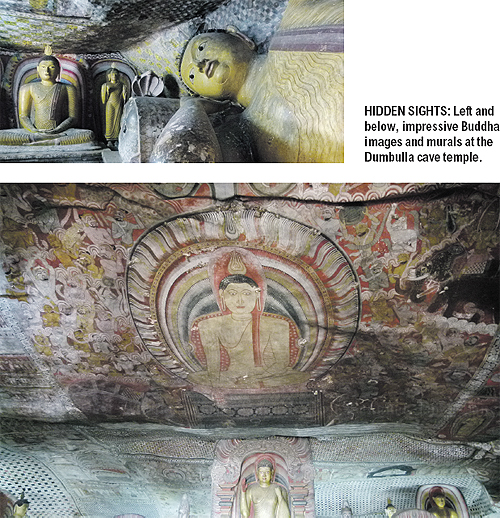
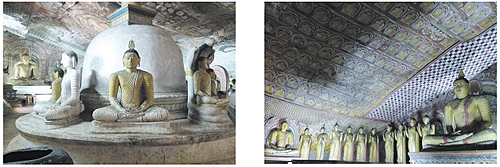
Back to buddhism's basics in sri lanka
After years of domestic strife, the country is now safe to visit and its sacred sites offer Thai Buddhists an unparalleled opportunity to experience their faith in a country where devotion remains largely unaffected by modernity's march
- Published: 19 May 2013 at 00.00
- Newspaper section: Brunch
'Ayu Bowan! May you live a long life!" When you hear this greeting, which is often accompanied by a gesture similar to a Thai wai, you know you are in Sri Lanka, a lush green tropical island with an ancient culture.

LION ROCK: Monks walking towards the Sigiriya rock fortress, famous for its fresco of court ladies on a cliff as well as ancient Sri Lanka’s advanced water management and architecture.
After more than 20 years of the Tamil Tigers' insurgency, the civil war that had afflicted Sri Lanka with violence and turmoil finally came to an end in 2009, and the country's new-found peace allows it to welcome visitors back once again.
And the new calm offers locals from both sides of the conflict a chance to live the normal and safe lives they have long deserved.
Visitors from around the world are also streaming back to the picturesque "Pearl of the Indian Ocean" to marvel at its natural charms and cultural richness.
They include many Thai Buddhists who now consider Sri Lanka the must-go destination after India for religious pilgrimages. After recently returning from such a trip, I can understand why.
In India, visits to sacred sites bring joy to the devout from being where the Buddha once lived and taught, where you can pray and meditate and feel as if you were back in ancient times, in the presence of the Buddha and his disciples. The joy is perhaps also heightened by the relatively more difficult journey to travel between sites far from one another.

MUTE WITNESS: An ancient Buddha image in Anuradhapura.
But the sacred sites in India are mere remnants of a long-lost past surrounded by a different value system _ and also by much poverty that often fills the more affluent visitors with guilt.
Sri Lanka offers a different feel.
Everywhere we go, we were greeted by the island's lush green natural abundance, the ever-smiling people and the easy-going atmosphere. The ancient religious sites are also teeming with the faithful who fill them with an air of sanctity with their white clothing and the hum of prayers.
In India, the ruins of the ancient monuments are for tourists. In predominantly Buddhist Thailand, it has become increasingly difficult to find peace and quiet in temples where people now mostly go to ask for divine help in exchange for donations.
It is extremely refreshing, therefore, to see the Buddhists in Sri Lanka still going to temples to pray and meditate as part of their daily lives.
Practising Buddhist Somnuek Khemacheva outlined the different experiences India and Sri Lanka offer the devout.
"In India, we visit the sacred sites to pay homage to the Buddha and to follow the journeys he took during his lifetime to reaffirm our faith," Ms Somnuek said.
"In Sri Lanka, we're here to witness the power of faith, to admire people's deep sincerity toward Buddhism, and to reflect on what we Thai Buddhists have lost in our pursuit of material comfort and convenience, that we equate with happiness."
At the Temple of the Sacred Tooth Relic in Kandy, we were overwhelmed by the hymns of prayer from the devout as they waited patiently from early morning to pay homage to the holy relic. Such displays of devotion greeted us at every sacred site.

a bell-shaped chedi at Dumbulla cave temple. Thailand has adopted the same style of chedi.
At the Maha Bodhi temple in the ancient town of Anuradhapura, people come from near and far to pay respect to the world's oldest flowering tree, grown from the original Bodhi tree under which the Buddha attained enlightenment more than 2,500 years ago. Now frail, hunched and needing support to withstand the elements, the sacred tree was brought to Sri Lanka by Theri Sangamitta, a Bhikkhuni and daughter of the Emperor Ashoka around 249BC.
Like the Maha Bodhi temple, other religious monuments in Anuradhapura still draw grandparents, couples young and old, and mothers and fathers with small children in tow. Going to a temple is still a family outing in Sri Lanka. And to see teenagers going to temples in groups, some seriously praying and meditating in the shade of trees, is really heartening.
For Thai Buddhists, Sri Lanka offers a special joy, like meeting up with an old friend who played an important part in shaping who they are today.
Theravada Buddhism in Thailand, after all, came from Sri Lanka. Dating back more than 700 years, Theravada Buddhism from Sri Lanka reached Sukhothai in the 13th century and had a significant influence on both religious traditions and architecture, from the days of old Siam to modern times.
''It's like going back to see our roots,'' added Ms Somnuek, while marvelling at a Sri Lankan bell-shaped stupa, a design that Thailand has adopted as its own.
The sense of familiarity does not stop there. Similarities between both countries' alphabets suggest both Sri Lankan and Thai characters come from the same ancient roots. It is the same with Sri Lankan curry, which is marked by the use of coconut milk and much less dried spices than in Indian food.
Even for those who do not share these cultural and religious ties, the island is a cultural wonder with seven Unesco World Heritage sites. The ancient capital Anuradhapura, for example, attests to Sri Lanka's rich cultural heritage and gives visitors a glimpse of Buddhism at its height, shortly after the Buddha's passing.

a boy and golden coconuts. Coconut juice is considered the purest and healthiest fruit juice.
The island kingdom's capital for more than 1,000 years and the centre of Buddhist scholarship and the arts, Anuradhapura is home to so many Buddhist monuments that it would take days to explore them. Among the most notable: The Ruwanweliseya Chedi, an architectural marvel that is within walking distance of the holy tree; the 122m Jetavanaramaya Stupa, the city's biggest stupa and in ancient times the world's third highest structure _ in scale, it is only behind the pyramids of Egypt; and the 113m Abhayagiri stupa, which once was the heart of the city's biggest monastery and served as an international centre for Buddhist scholarship and arts for 5,000 monks.
The Thuparama Dagoba, meanwhile, is much smaller in scale but it is the oldest, being the first stupa built on the island around 300 years after the Buddha's time. It is also one of the holiest sites because it is where the Buddha's right clavicle was enshrined.
About three hours' drive from the ancient capital is Sigiriya (the Lion Rock), a gigantic rock fortress with palace ruins. While Sigiriya is famous for its 1,500-year-old fresco of court ladies on a cliff, it also attests to Sri Lanka's mastery in water management, architecture and fine arts in ancient times.

the elephant that leads the annual procession in Kandy takes a walk at the Sacred Tooth Relic Temple.
Half an hour drive's away is the Dumbulla cave temple with breathtaking murals and Buddha statues to remind us of the teachings of impermanence and non-attachment. It has been a sacred pilgrimage site for more than 2,000 years.
But no pilgrimage would be complete without a visit to the Temple of the Sacred Tooth Relic in Kandy. It is a long drive from the Dumbulla cave complex, but travelling from one site to another in Sri Lanka is a joy. The road may be long and narrow, but it is smooth, peaceful and traffic free. Best of all, it offers a picturesque vista that shows off Sri Lanka's diverse natural beauty, from the turquoise blue sea to green valleys and scenic mountains.
While past political violence stalled development and raised questions over the roles of religions and ethnicity, for outsiders the relatively slow economic growth over the past 20 years makes a trip to Sri Lanka a journey back in time to a more relaxed, slower paced life where one still has time to stop and smell the roses.
It is a place to witness a rich, ancient culture and the power of faith. For Thai Buddhists, it is a place to cherish cultural ties and to realise that while faith helps make us feel full and secure within, the key to lasting peace is to follow the Buddhist teaching on non-attachment in order to transcend one's faith, race and ethnicity.
In the past, Sri Lanka gave old Siam our Buddhist culture. When present-day Thailand is fraught with ethnic violence in the restive South, the island can still teach us valuable lessons on the key to peace. I returned from Sri Lanka full of thankfulness.

HYPNOTIC: A snake charmer plies his trade.

WARM WELCOME: Paintings at the entrance of the Temple of the Sacred Tooth Relic in Kandy.




WELL PRESERVED: An ancient reservoir in Anuradhapura.

a fresco of court ladies at Sigiriya, a World Heritage site.


Travel | Sri Lanka - asia - travel | Stuff.co.nz
Travel | Sri Lanka - asia - travel | Stuff.co.nz
Vavuniya is the sort of place you go on the way to somewhere else. Though it's in the centre-north of Sri Lanka - a bindi on the country's forehead - it has the hallmarks of a border town, with trucks churning dust and policemen multiplying like mosquitoes.
Away to the south are Sri Lanka's famous tea plantations and sun-kissed ruins, Anuradhapura, and palm-fringed beaches such as Tangalle.
Above Vavuniya, all the way to Jaffna on the country's ravaged peninsula, is a great green terra incognita.
This bulk of Northern Province, also called the Vanni, makes for a fascinating road trip. One morning I board a bus at Vavuniya clutching an orange suitcase; 20 minutes later I'm off again, waving my passport at a military checkpoint.
The Vanni is open scrubland and squat houses with their windows gouged out and a bald ridge of dirt stretching off to the horizon - the once and future railroad. The Vanni is a vast, ominous nothing.
And yet, seen from another perspective, this land is also a great deal. During the 1970s several groups of young Tamils, some militant, responded to government laws that favoured the ethnic Sinhalese by agitating for an independent state called Tamil Eelam that would annex the Vanni and Jaffna Peninsula.
Things escalated, at first slowly and then in a shocking, violent rush; civil war was born. This northern quarter of Sri Lanka is both a contested dream and, until recently, a battleground.
Our bus shudders along the A9 Highway, passing dust-choked roadworks that make women onboard wrap scarves around their faces.
Sometimes I see President Mahinda Rajapaksa striding confidently across a billboard; most signs are blank though, or revealing in another way: "Welcome to Omaha Police Area" and "Paranyapa Police Area" and "Mankulam Police Station", with scrap lying out front like a junkyard.
BE PATIENT AND DRIVE UNITY IS STRENGTH is stencilled across a small hill.
These signs become more pointed the further north you travel: "Mine Clearance", "Danger: Mines" and "De-mining", with people digging holes, disguised behind face coverings of a different sort. This is not far from Kilinochchi, the old administrative capital of the Tamil Tigers, the most famous separatist group in Sri Lankan history.
The war was declared over on May 18, 2009, when the Tiger leadership was killed by the army on the north-eastern Mullaittivu coast.
Further on we reach Elephant Pass, a ligament of road joining Jaffna Peninsula to the rest of the country over a watery expanse.
I spend a week on the peninsula, wandering its quiet streets, paying respects in technicolour temples, taking ferries, and cycling beneath palmyrah trees.
But of all the things I see there - disturbing, miraculous, confusing, and gorgeous things - the most remarkable begins right here, at the start of Elephant Pass, with a burnt-out bulldozer propped up like a war memorial and a Sri Lankan family posing together, taking photos on a holiday to the newly opened north.
Jaffna
The electricity fails on my second afternoon in the city. Nobody seems concerned, though: the cook tunes a radio on the verandah, searching for Hindi music; Manattrii's man-of-all-trades, Balu, sweeps bare dirt with a wiry broom, his face swollen from a bee sting.
The man who runs this guesthouse is T.A. Arulnayagam, and when I ask him what's happening he explains that the power often goes out on public holidays. "They're doing works on the roads," he says. "Six, six-thirty tonight, it will come back on. Maybe seven."
Things happen when they happen in Jaffna. It has a population of about 90,000 but the character of a country town, albeit one with a battered past.
It's a diurnal place, for example, with locals rising early and all but abandoning streets to stray dogs after nightfall - a self-imposed curfew, since the official one ended in 2009 (after 14 years). Though it sprawls through leafy neighbourhoods, Jaffna has almost no height except for temple gopurams, those terraced towers cluttered with vivid Hindu gods.
Many of the roads are unsealed and there are very few cars - just buses, auto-rickshaws (tuk-tuks) and the occasional Morris Minor. "In Colombo it is very noisy," one local tells me. "In Jaffna, no noise." Indeed, bikes are the most common form of transport.
It's not unusual to be walking down a street, note a rattle, and turn to see a young girl gliding past on her bicycle, sari dazzling in the sunlight.
Each morning I wake at Manattrii and take a cup of tea on the verandah. Then I simply stroll in random directions. "Serendipity" is derived from a Sri Lankan word and good inspiration for the traveller with the luxury of time.
Arulnayagam encourages me to roam widely. Originally from Kayts on the nearby island of Velanai, he moved to Jaffna in 1990 because of the conflict. "Now we are all OK in Jaffna," he says, when I ask about safety. "Development is going on, buildings and construction. You'll find a lot of intellectuals. The ethnic conflict still exists - there has yet to be a solution for that. But in Jaffna we don't have any problems."
It's through strolling that I find the Nallur Kandaswamy Kovil, a lavish Hindu temple devoted to Murugan, brother of Ganesh. The exterior walls are striped in red and white; inside is a cool sanctum filled with incense and devotees waiting for the next puja ceremony. J
ust across the road are temples of another sort - "cream houses", Rio and Rajah, where teenagers bow down over baroque sundaes studded with nuts. It's 9am when I visit and the parlours are bustling with trade.
Heading in another direction, the centre of Jaffna unfurls as a grand bazaar seemingly grafted onto the bus station. One street is occupied by tailors and clothing shops: S. S. Fancy, Arul's Fancy, Abiramy Fancy House.
Another is filled with merchants selling spice from enormous sacks, or flayed fish hung along a line like tatty business shirts. In the vegetable market, banana stems look like stalactites and durians are the size of dinosaur eggs.
To pass the stifling midday hours I visit Malayan Cafe, a vibrant eatery with marble tables and glass cabinets filled with portraits of yogis and bottles of Coca-Cola.
The curry comes served on banana leaves and you eat with your fingers - delicious and liberating. "Ricky Ponting!" the waiter croons when I reveal my origin.
As the heart of Sri Lanka's Tamil culture, Jaffna is different from anything south of Vavuniya, where Sinhalese dominates. It's also more fraught, with the deep scars of a war veteran. Trapped between militant separatists and the government, Jaffna and its citizens spent decades amassing collateral damage.
The UN estimates that more than 160,000 houses were damaged or destroyed in the north. It's impossible to miss these urban ruins: mouldering Mughal houses, empty and fractured. The once-famous art deco railway station is an eerie wreck with bullet holes in the walls.
Jaffna Fort was the setting of a 107-day siege between the army and Tamil Tigers in 1990; despite slow restoration, funded by the Dutch, evidence of the battle remains visible.
But things are growing back, too. More than once I notice a line of abandoned townhouses punctuated by a freshly painted one. "Modernity", proclaims one rental advertisement; another sign reads, "Now in Jaffna: Civil Engineering".
And then there is the Public Library, inaugurated in 1841, burnt in 1981 - 90,000 volumes lost - and resurrected a decade ago through international donations.
As Arulnayagam says, Jaffna has always been a centre of intellectuals. The library is a symbol of Tamil learning. It's a beautiful, neo-Mughal place, with stacks of National Geographics and students studying law in the airy reading rooms.
A statue of four-armed Saraswati, goddess of knowledge, sits out front cradling her stringed veena. Later I will read that Hindus believe it was with her wisdom that Brahman created the universe.
Jaffa Peninsula
It's easy to lose time in a seldom-visited city, eating new foods and discovering sites you've never read about. But Jaffna Peninsula is a thousand square kilometres - much more than the limits of its urban centre.
Ask around and everybody offers tips on places of interest. Visit Chatty Beach, says the proprietor at Cosy's Vege, writing a list on a napkin. A British expat extols the virtues of Delft, a desolate island famed for its wild Dutch ponies and a rock that locals believe is growing by the year. Another island is Nainativu, worth visiting for the Naga Pooshani Amman Kovil - a temple that has never met a colour it didn't like.
Arulnayagam speaks highly of Keerimalai Spring, recently opened after 20 years of military embargo; its waters are revered for having supposedly healed a Chola princess of facial deformities.
To reach this spring, however, you take a bus through the High Security Zone of Palali, where more than 25,000 families lived as agriculturalists before being forcibly evicted.
Most are waiting for permission to return - a stark reminder that, as Arulnayagam says, "full normalcy is not there". Many believe that Tamils remain subject to discriminating policies in Sri Lanka (the news, when I visit, is filled with allegations by the International Crisis Group and questions concerning war crimes).
For a final excursion I choose Point Pedro on the north-eastern tip of the peninsula, a place that has suffered the double indignity of war and the 2004 tsunami, which washed fishing boats more than a kilometre inland.
When I reach the beach, I find it cluttered with rudimentary shacks; men fuss over tangled nets in the sand. I walk alongside, searching for a place to settle down for lunch, and the nets are succeeded by barbed wire. Suddenly the beach is deserted and strange.
Perhaps I've gone too far. Perhaps the area is restricted. But as I turn around I see a busload of Sri Lankans wearing floppy hats and sunglasses. They are gathered together near the lighthouse and some are taking photos of the soldiers there.
"Where from?" one soldier asks as I drift through the spectacle. "Why you come?"
"Just visiting," I say, gesturing to the people and the lighthouse. "Just come to see the sights." And then, holding up my camera as an alibi, I keep on walking, the traveller as witness.
Lance Richardson travelled with assistance from Singapore Airlines.
WAR AND PEACE: WHERE TO GO
The Sri Lankan Civil War focused on the Vanni and Jaffna Peninsula, but many other sites involved in the 26-year conflict are finding new life.
Wilpattu National Park For 17 years, Sri Lanka's largest national park (1085 square kilometres) was restricted. Now you can camp in designated spots and hire a jeep for leopard safaris.
Kandy The cultural capital of the Sinhalese, Kandy was pulled into the war in 1998 when the Tigers attacked the Temple of the Sacred Tooth Relic. Today the damage is mostly invisible and the temple has regained its serenity.
Anuradhapura This ancient capital is significant for two reasons: its gorgeous train station shows what Jaffna's once looked like; and its Bodhi tree - more than 2500 years old - lives on despite gunfire damage.
Trincomalee Once visited by Marco Polo and coveted by colonialists for its deep harbour, Trincomalee, like Jaffna, is a city stretching its legs after war. The nearby beaches of Uppuveli and Nilaveli are fast becoming popular with visitors.
Pigeon Island Just 15 minutes off Nilaveli Beach, the reefs around Pigeon Island offer superb opportunities for diving. Now navy restrictions have been lifted, local fishermen have resumed their lives, too.
FAST FACTS
Getting there All buses north to Jaffna go through Vavuniya. The journey can be long, though it's worth the experience. One alternative is the new daily flight between Jaffna and Colombo by Expo Aviation. See expoavi.com.
Getting around Jaffna is easily explored on foot, but bicycles can be rented from many guesthouses.
Buses to other parts of the peninsula, including Point Pedro, leave from the central bus station. To reach the islands of Delft and Nainativu, take a bus to Kurikadduwan.
Staying there Though there is some street noise and no hot water, Manattrii offers exceptional accommodation in a restored 19th-century Vastu house, with the best food in town. Rooms from 3500 rupees ($33.5) a night. Seemanattrii.com.
- Sydney Morning Herald
Smuggled dinosaur skeleton returned to Mongolia | Culture , Travel & Tourism | THE DAILY STAR
Smuggled dinosaur skeleton returned to Mongolia | Culture , Travel & Tourism | THE DAILY STAR
Read more: http://www.dailystar.com.lb/Culture/Travel-and-Tourism/2013/May-07/216225-smuggled-dinosaur-skeleton-returned-to-mongolia.ashx#ixzz2Twe5GbSa
(The Daily Star :: Lebanon News :: http://www.dailystar.com.lb)
NEW YORK: U.S. authorities in New York are returning a 70-million-year-old Tyrannosaurus skeleton to the Mongolian government this week.
The artifact will be flown to its native land free of charge via Korean Air, U.S. and Mongolian officials said Monday while announcing the repatriation of the priceless artifact.
“We are very pleased to have played a pivotal role in returning Mongolia’s million-dollar baby,” U.S. Attorney Preet Bharara said. “Of course, that million-dollar price tag, as high as it is, doesn’t begin to describe the true value of an ancient artifact that is part of the fabric of a country’s natural history and cultural heritage.”
The skeleton had been looted from Mongolia’s Gobi Desert and illegally smuggled into the U.S. by fossils dealer Eric Prokopi, authorities said. Prokopi, who bought and sold whole and partial dinosaur skeletons out of his Florida home, illegally imported the bones into the U.S. then assembled them into a skeleton, authorities said.
The dinosaur was seized by federal Immigration and Customs Enforcement agents after it was sold at auction in New York for over $1 million last year. The government said the skeleton was mislabeled as reptile bones from Great Britain.
By law, any dinosaur fossils found in Mongolia belong to the country and its people.
“It’s really important that as nations, we recognize there’s a difference between art sold in the regular course of business, and then there are things that are truly national heritage,” said ICE director John Morton.
Prokopi pleaded guilty in December to conspiracy, the fraudulent transfer of the bones and making false statements to customs authorities.
Mongolia President Tsakhia Elbegdorj has thanked U.S. authorities for returning the dinosaur that once stood 7.3 meters long. It’ll eventually be displayed as a centerpiece of a new museum called Central Dinosaur Museum of Mongolia.
The artifact will be flown to its native land free of charge via Korean Air, U.S. and Mongolian officials said Monday while announcing the repatriation of the priceless artifact.
“We are very pleased to have played a pivotal role in returning Mongolia’s million-dollar baby,” U.S. Attorney Preet Bharara said. “Of course, that million-dollar price tag, as high as it is, doesn’t begin to describe the true value of an ancient artifact that is part of the fabric of a country’s natural history and cultural heritage.”
The skeleton had been looted from Mongolia’s Gobi Desert and illegally smuggled into the U.S. by fossils dealer Eric Prokopi, authorities said. Prokopi, who bought and sold whole and partial dinosaur skeletons out of his Florida home, illegally imported the bones into the U.S. then assembled them into a skeleton, authorities said.
The dinosaur was seized by federal Immigration and Customs Enforcement agents after it was sold at auction in New York for over $1 million last year. The government said the skeleton was mislabeled as reptile bones from Great Britain.
By law, any dinosaur fossils found in Mongolia belong to the country and its people.
“It’s really important that as nations, we recognize there’s a difference between art sold in the regular course of business, and then there are things that are truly national heritage,” said ICE director John Morton.
Prokopi pleaded guilty in December to conspiracy, the fraudulent transfer of the bones and making false statements to customs authorities.
Mongolia President Tsakhia Elbegdorj has thanked U.S. authorities for returning the dinosaur that once stood 7.3 meters long. It’ll eventually be displayed as a centerpiece of a new museum called Central Dinosaur Museum of Mongolia.
Read more: http://www.dailystar.com.lb/Culture/Travel-and-Tourism/2013/May-07/216225-smuggled-dinosaur-skeleton-returned-to-mongolia.ashx#ixzz2Twe5GbSa
(The Daily Star :: Lebanon News :: http://www.dailystar.com.lb)
Travel Agents Come Full Circle, Are Back in High Demand | Travel | Washingtonian
Travel Agents Come Full Circle, Are Back in High Demand | Travel | Washingtonian

Although my husband and I had traveled to a lot of foreign destinations, we’d used a travel agent only once—to help map out a three-week tour through New Zealand. For other trips—whether Greece or Italy or Mexico—we’d done the planning ourselves.
So why did we use a travel agent to book a relatively simple, one-week vacation in the Caribbean this past February?
One reason, which is apparently becoming more common and boosting the business of travel agents: I was sick of sorting through TripAdvisor. I had spent hours online looking for a tropical resort worthy of a special birthday. While review sites such as TripAdvisor can be great tools, they also can be confounding when the same resort earns both five-star raves and one-star rants. Which do you trust?

Jim Augerinos, owner of Perfect Honeymoons & Holidays Travel, got his first passport at age three. Photograph By Andrew Propp.
When I finally called a travel consultant I knew—Jim Augerinos of Perfect Honeymoons & Holidays Travel—he talked me through some choices and we settled on a property in St. Lucia. I had expected that a travel agent could save me time, but I hadn’t anticipated that he’d also save me money: When he quoted us a price for airfare and hotel, it was less than I’d found online. He also guaranteed that the resort would give us a free room upgrade, as it does for all his clients, and the rate included trip insurance.
Some of the benefits of travel agents are obvious: They save you time, and because they travel so much themselves, they have—literally—a world of experience.
“I tell my clients I’m their human TripAdvisor,” says Augerinos. “When you go to Rome, I can tell you, ‘Here’s a great casual restaurant, here’s a great shop to buy Murano glass, here’s a great tour guide, here’s where to get your tickets to the Colosseum.’ ”
You don’t need a travel agent for every trip, of course—most people can book a flight to Florida themselves. (Besides, when agents might charge $50 to book a domestic ticket or $100 for overseas airfare, why bother if that’s all you need?) An agent isn’t a good fit for the traveler who always stays at Holiday Inns or bed-and-breakfasts or who relishes the planning as part of the journey. Agents probably make the most sense for complex, multigenerational, or once-in-a-lifetime adventures. Those who specialize in higher-end travel typically call themselves travel consultants.
Travel agents were hit hard by both the Internet and September 11, 2001—many mom-and-pops went under, while others were bought up by travel-management corporations. But in the past few years, the avalanche of information online has caused more consumers to look for a personal travel guide. In the recent Survey of the American Luxury Travel Consultant, 71 percent of agents reported that their business had improved over the past 12 months.
In the pre-Internet days, travel agents made money through commissions, typically 10 to 15 percent of the trip’s cost. But airlines have cut out commissions, and hotels and cruises have reduced what they pay. To make up the difference, most agents now charge clients a fee that varies depending on the trip’s complexity, though $100 to $250 is average in the Washington area for planning an international vacation with flights, hotels, and rental cars, says Augerinos.
Even with an agent’s fee, a trip may cost you the same as—or less than—you would have paid on your own. Says Jessica Griscavage of McCabe World Travel: “I just had a new client who said, ‘I booked the Ritz-Carlton on Expedia.’ If he had booked through me, I would have gotten him a free breakfast every day. In this case, that’s $70 per couple per day.”
Because of the relationships they build and the larger travel consortiums they’re sometimes part of—such as the exclusive Signature Travel Network and Virtuoso organization—agents often can pass along perks such as spa credits, complimentary airport transfers, prepaid gratuities, and free nights.
“It’s easy for someone to go on the Internet and buy a Royal Caribbean cruise and see that it’s $3,000,” says Jackie Rush of Frosch International Travel. But she says she often can do better, perhaps getting the taxes on the trip paid or free shore excursions. “Sometimes it’s $500 in shipboard credit.”
You’re also paying for peace of mind. When Air Tahiti Nui flight attendants went on strike last August, Augerinos was able to rebook honeymooners bound for Bora Bora.
“I had called the airline and been assured that flights would not be canceled,” he says. “But my clients got to the airport in Los Angeles and there were 500 irate people at the ticket counter.” His clients didn’t have to line up at the counter or deal with the airline—they called Augerinos’s emergency line. “I rebooked them on an Air Pacific flight to Fiji. They still had a South Pacific island, they still had an over-water bungalow. I redid their honeymoon at no extra cost. That’s the type of thing we as travel agents do.”
What should you look for in a travel consultant? “You definitely want to make sure the agent has some sort of accreditation,” says Christopher Elliott, the reader advocate for National Geographic Traveler.Membership in the American Society of Travel Agents (ASTA) is a good sign; the Association of Retail Travel Agents (ARTA) is smaller but also reputable. Good agents may earn certification in specific fields, too—for example, Hawaii vacations, destination weddings, or gay travel—from the Travel Institute; if you see the initials CTC, for certified travel counselor, that’s reassuring. Affiliation with a big name in the industry—such as American Express or Virtuoso—is likewise a promising sign.
Elliott says to beware of agents, especially home-based ones, who have “credentials” that aren’t from well-recognized organizations. “There are ‘card mills’ that sell accreditation to people with no experience in the industry,” he says.
Elliott suggests running an agent’s name through the Better Business Bureau, checking how long he or she has been in business, and asking for client references.
It’s a red flag, he says, if an agent suggests you pay for a trip with cash or a check or, worse, by wiring the money: “Run, don’t walk. They’re probably up to no good.”
How do you know if an agent is recommending a resort, cruise, or tour operator because of an incentive he or she is getting? There’s no way to know if a commission is influencing the agent’s thinking, says Elliott, but it’s likely that person is earning a cut of your booking.
“Look at the economics—even if a travel agent is charging you a $50 booking fee, how many sales do they have to make to pay the rent?” he says. “There are commissions agents get. Then there are overrides, a bonus after you book a certain number of vacations or cruises. Cruises are highly incentivized—an agent can make 10 percent or as much as 14 percent on these bookings.”
Good agents want repeat business, so incentive or not, it makes sense to do what’s in the best interest of the client.
“I don’t have an agenda when I sell something,” says Augerinos. “I suggest whatever is right for the client. It happens rarely that travel agents steer you toward something because they make more money—at least in my world.”
If it would put your mind at ease to be up-front about incentives, Elliott says to ask an agent what he or she would earn off your booking: “An honest agent will tell you. If they’re trying to pull a fast one, they might say it’s none of your business.”
Having an initial conversation with a prospective agent is key. Ask how often he travels and which places he’s liked and hasn’t. Has the agent been to the destination she’s suggesting for you? You’re more likely to mesh with a professional who prefers boutique hotels over grand resorts if you do, or who feels the same way you do about cruises—who, in other words, sees the world as you do.
Know a local travel agent you’d recommend highly? Send a note to Sherri Dalphonse at sdalphonse@washingtonian.com.
This article appears in the May 2013 issue of The Washingtonian.
Subscribe to:
Comments (Atom)




